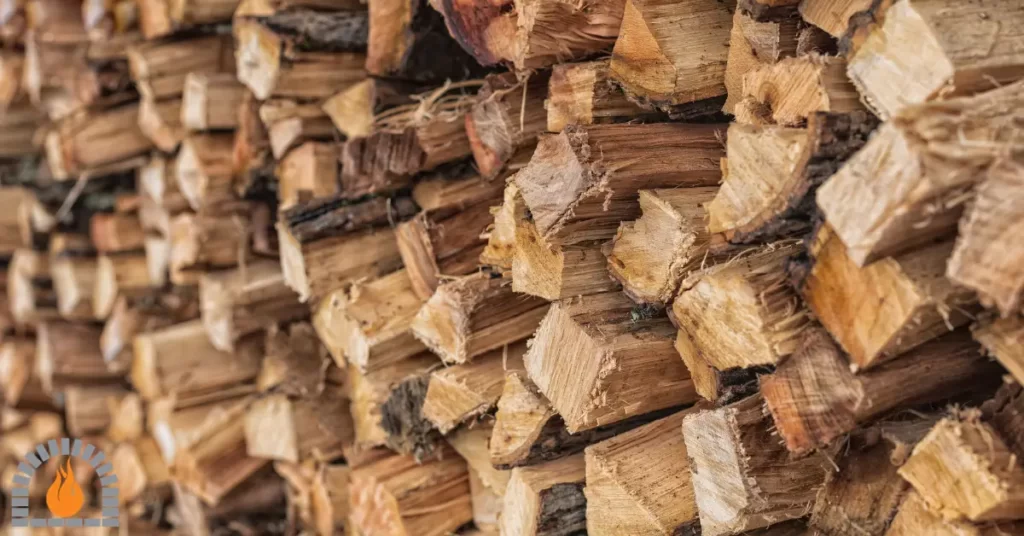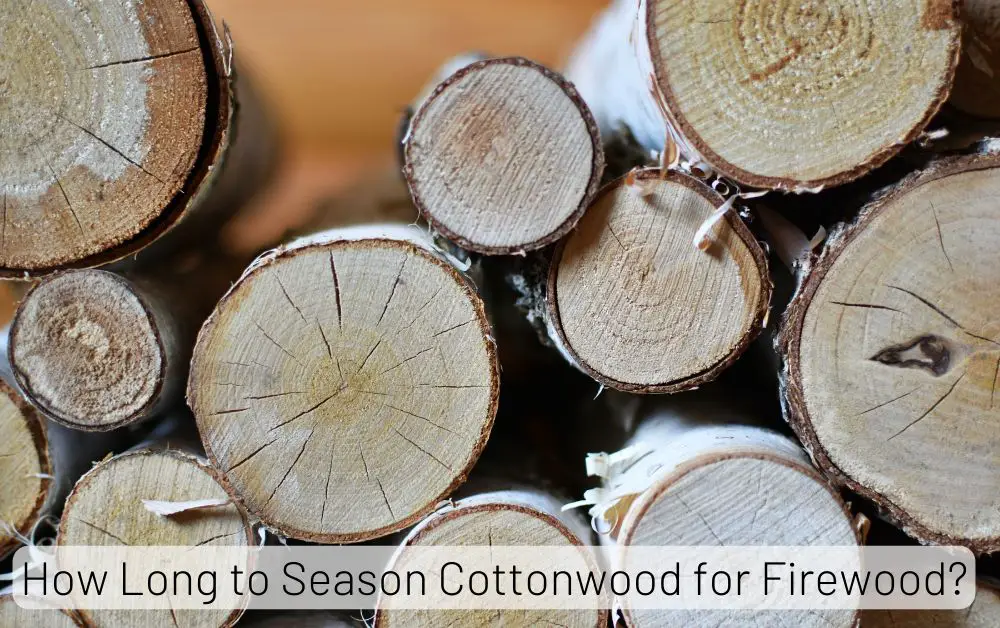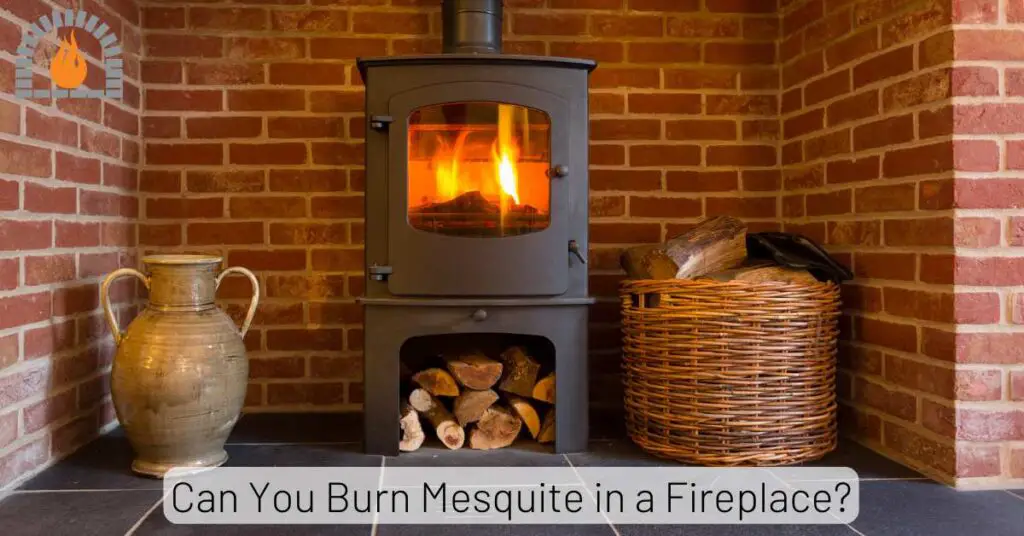The quest for the perfect firewood remains a crucial element in the timeless dance between man and fire. Among the contenders for the throne of superior firewood, hickory stands tall and is revered for its reputation as a top-tier fuel source.
As the crackling flames cast their warm glow, the question arises: Is hickory good firewood, or is its reputation merely fueled by myth and tradition?
Overview
Hickory wood is an excellent choice for firewood due to its impressive heat output of 28.5 million BTUs per cord. The dense nature of hickory wood enables it to burn hot and long with minimal sparking, smoking, and high coal production, ensuring a steady and reliable heat source. When burned, hickory releases a sweet and savory fragrance that can enhance the ambiance of any space.
The Allure of Hickory: A Brief Overview
Hickory, belonging to the genus Carya, is a hardwood known for its strength, density, and distinctive aroma.
Found predominantly in North America, hickory has become a popular choice for various applications, including furniture, tool handles, and, of course, firewood.
Is Hickory Good Firewood?
Yes, hickory is considered one of the best types of firewood. It is highly valued for its excellent burning characteristics and high energy content. Hickory burns slowly and steadily, providing a long-lasting heat source that is beneficial for keeping a fire going through the night or for extended periods.
Hickory has a relatively low resin content compared to other wood types, reducing the likelihood of creosote buildup in chimneys.
Properly seasoning firewood is crucial for optimal performance. Hickory, though dense, benefits from adequate seasoning to reduce moisture content. This section will guide you through the best practices for seasoning hickory firewood, ensuring you get the most out of its impressive qualities.
Key Characteristics of Hickory as Firewood
Heat Output and Efficiency
One key factor that makes hickory an excellent choice for firewood is its impressive heat output of 28.5 million BTUs per cord.
The dense nature of hickory wood allows it to burn hot and long, providing a steady and reliable heat source. This characteristic ensures a warm and cozy environment and contributes to overall energy efficiency.
Aromatic Ambiance: The Fragrance of Hickory
Beyond its heating capabilities, hickory firewood offers a bonus – a delightful aroma. When burned, hickory releases a sweet and savory fragrance that can enhance the ambiance of any space.
This aromatic quality adds a sensory dimension to the experience of using hickory for your indoor or outdoor fires.
Low Resin Content
Hickory has a relatively low resin content compared to other wood types, reducing the likelihood of creosote buildup in chimneys.
This can contribute to safer and cleaner burning.
Hardwood Characteristics
Hickory is a hardwood, and hardwoods, in general, tend to burn cleaner and longer than softwoods.
Hardwoods also produce less creosote, which can help maintain the health of your chimney.
Related Post: Can You Burn Sumac Wood?
How To Identify Hickory Firewood?
Identifying hickory firewood can be done by examining the characteristics of the wood and considering the tree it comes from.
Hickory is a hardwood prized for its excellent burning properties, producing a hot, long-lasting fire. Here are some tips to help you identify hickory firewood:
-
Color: Hickory wood typically has a light to medium brown color. The heartwood (inner part of the tree) tends to be darker than the sapwood (outer part). The color can vary, but hickory is generally lighter than other hardwoods.
-
Grain: Hickory has a straight, close grain. The grain pattern is usually fairly uniform, but it can vary depending on the specific type of hickory. The wood can also have a coarse texture.
-
Density and Weight: Hickory is known for being dense and heavy. It is one of the densest hardwoods commonly used for firewood. If you pick up a piece of hickory firewood, you should feel its weight compared to other types of wood.
-
Smell: When hickory is freshly cut, it often has a distinctive, sweet aroma. It could be hickory if you smell a piece of firewood with a pleasant, sweet scent.
-
Bark: The bark of hickory trees is usually tight and does not easily peel away. It can be rough and furrowed. However, the bark alone may not be the most reliable indicator, as it can vary among different types of hickory.
-
Check for Holes: Wood-boring insects are less likely to infest hickory due to its hardness. If you notice very few or no holes on the firewood’s surface, it might indicate that it’s hickory.
-
Ask the Supplier: If you’re buying firewood from a supplier, don’t hesitate to ask them about the type of wood they are selling. A reputable supplier should be able to provide information about the wood they sell.
-
Leaf Identification: While not directly applicable to firewood, if you’re familiar with the hickory tree leaves, you can use leaf characteristics for identification. Hickory leaves are typically compound with serrated edges and have a pinnate or odd-pinnate arrangement.

Which Is Better Firewood Hickory Or Oak?
I prefer hickory over oak as firewood. Both are hard and dense woods with excellent burning qualities; however, the pleasant aroma of hickory makes it the winner. So, if you want your home to look and feel cozy, hickory is the best choice.
Related Post: 9 Best Wood For Fireplace
Safety Guidelines
When using hickory or any type of firewood, it’s essential to follow safety guidelines to prevent accidents and ensure a safe environment. Here are some general safety guidelines for using hickory as firewood:
-
Proper Storage: Store firewood away from your home and other structures to prevent pests and reduce the risk of fire spreading.
-
Dry and Seasoned Wood: Use dry and seasoned hickory wood. Seasoned wood burns more efficiently, produces less creosote buildup in chimneys, and reduces the risk of fires.
-
Chimney Inspection: Have a professional inspected and cleaned your chimney regularly to remove creosote buildup and ensure proper ventilation.
-
Airflow: Allow for proper airflow around the firewood. Stacking wood loosely facilitates better drying and combustion.
-
Safety Screen: Use a safety screen or glass doors to prevent sparks and embers from escaping the fireplace or wood-burning stove.
-
Keep Flammable Items Away: Keep flammable materials, such as curtains, furniture, and decorations, safe from the fireplace or wood-burning stove.
-
Supervision: Never leave a fire unattended. Ensure that someone is present when the fire is burning, and fully extinguish the fire before leaving the area.
-
Use a Fire Extinguisher: Have a working fire extinguisher nearby, and ensure you know how to use it.
-
Children and Pets: Keep children and pets at a safe distance from the fire. Consider using safety gates or barriers to prevent access.
-
Burn Only Wood: Avoid burning treated wood, painted wood, or other materials, as they can release harmful chemicals when burned.
-
Douse Ashes: Allow ashes to cool completely before disposing of them, and use a metal container for ash disposal. Store the container away from combustible materials.
-
Follow Local Regulations: Familiarize yourself with local regulations regarding the use of firewood and open fires. Some areas may have restrictions or specific guidelines.
The Verdict: Is Hickory Good Firewood?
In conclusion, hickory firewood emerges as a standout choice for those seeking a reliable, efficient, and aromatic wood for their fires. From its impressive heat output to its culinary applications, hickory proves its worth on multiple fronts. Consider embracing the hickory advantage and elevate your fire experience to new heights.
Affiliate Disclosure: Fireplaceadviser.com is a participant in the Amazon Services LLC Associates Program. We may earn a commission when you click on certain links on this site and purchase.

Hello!! I am Jamal Khan. I often fix my home electric heaters and gas stove problems and research the common issues in the heating units to improve my knowledge and expertise. The aim of establishing fireplaceadviser.com is to share my expertise and knowledge with my audience.


















